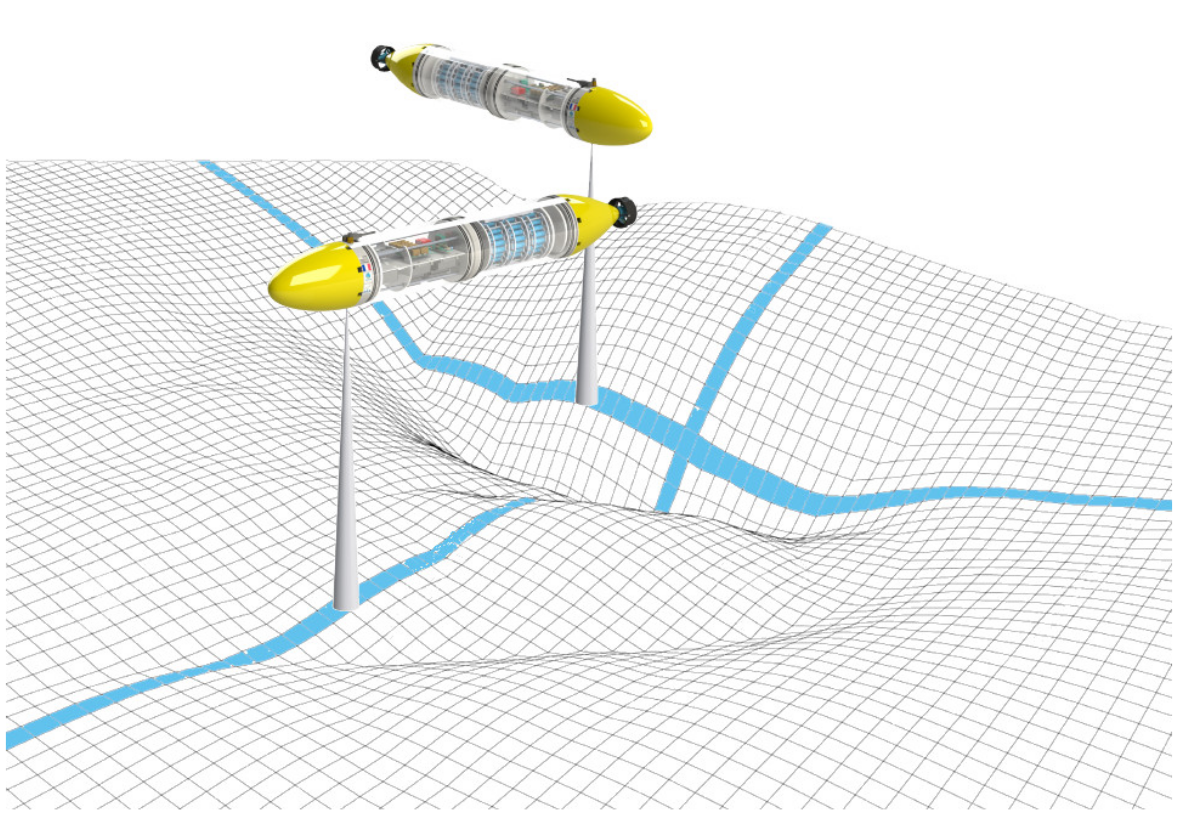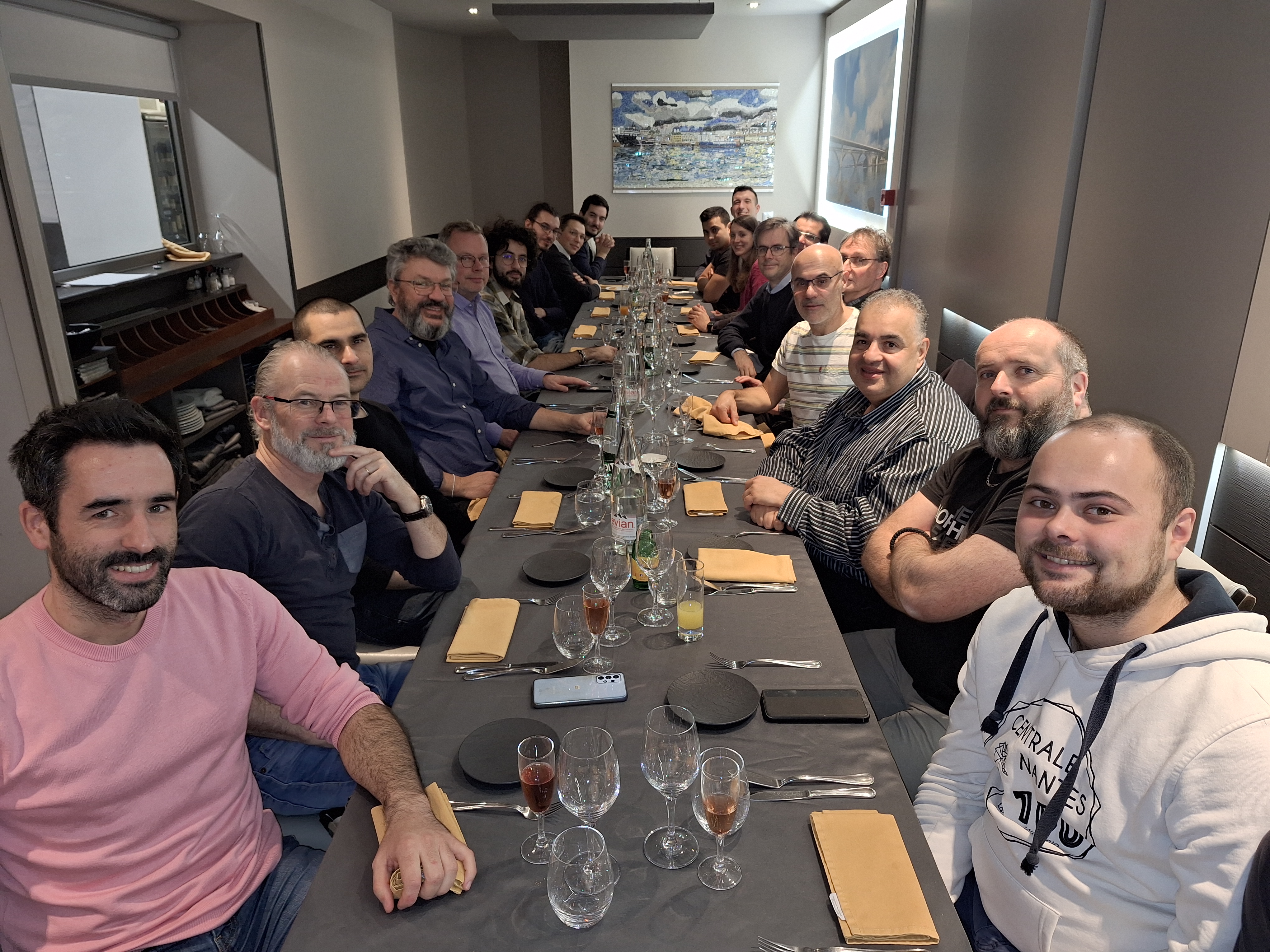


|

|

|

|

|

|

|

|
Robex est une des équipes du Lab-STICC. Elle fait partie du pole IA&O (Intelligence Artificielle et Océan).
Tous les ans sont organisés les Robex days.
Pendant ces journées, il y a des exposés internes à Robex.
Comme tous les ans, cette rencontre se tiendra à l'ENSTA Bretagne :
![]()

Control of a enemy swarm by broadcasting false messages
In this talk, I will consider several enemy robots moving in a flat environment made with landmarks. These robots have a controller which is known, i.e., we know the algorithm inside each robot. The controllers use the information on the position of some landmarks that are broadcast by the landmarks themselves (for instance, using AIS). We assume that we have the control of the messages sent by the landmarks. The problem to be considered is to control the trajectories of the robots by broadcasting false information.

Bounded dual simplex using intervals
In this talk, we consider a modification of the dual simplex algorithm when each constraint has an upper and lower bounds, using intervals. We aim to guarantee a safe upper bound for the linear optimisation problem and to prevent ill-conditioned steps by ``switching'' the side of remaining basic constraints when needed. We also discuss different issues when trying to implement the simplex algorithm using intervals.

Stabilité et mise en formation avec deux ROVs
Le contrôle en formation d'un groupe de robots sous-marins est un sujet qui a vu beaucoup de publications cette dernière décennie.
Beaucoup de solutions théoriques ont été proposées et vérifiées en simulation, mais la littérature peine sur deux points.
Premièrement, les systèmes étudiés restent souvent simples, alors qu'en pratique ils sont non-linéaires, hybrides et fortement perturbés.
Deuxièmement, les applications pratiques de mise en formation sont encore rares. Dans ce contexte, nous avons étudiés
la stabilité de la mise en formations de deux ROVs.
Dans cette présentation, nous donnons la preuve de stabilité de la solution hybride et non-linéaire proposée.
Puis, nous vous présenterons l'application pratique qui a été réalisée au Lac du Guerledan en Novembre 2023 dans le cadre de la Journée Drone & Cap.

Interval-based validation of a non-linear estimator
Estimators are used to estimate a quantity based on observed data. This estimation induces an error that needs to be quantified beforehand in order to validate whether or not the estimation can be used. One way of a priori validating an estimator is to bound its error in a given area. To do so, methods such as the method of least squares or Newton's method are commonly used as they are easy to use and efficient with linear estimators. However, their application to non-linear estimators requires an approximation of the model by a linear one, which induces an error in the validation. This presentation proposes an Interval-based validation method that can be applied to both linear and non-linear estimators.

Symbolic Dynamic Lagrangian Model: Dimensioning, Control, Observation in Robotics
We will explore the Lagrangian approach for the dynamic modeling of robots. Implemented through symbolic computation, this method provides a systematic and fast approach to obtain a model used in mechanical dimensioning, control law calculation, and the establishment of state observers. It is therefore an effective tool for the preliminary design phase of robots.

Unmotorize ROV gripper to catch profiling floats
This presentation presents an ROV (Remotely Operated underwater Vehicle) gripper for retrieving cylindrical profiling floats. In order to fit several types of ROVs and to be easily installed, the gripper is not motorized, using only the robot’s movements to catch the floats by simply moving forward on them. Then, the gripper uses the turnstile and freewheel concept to grasp and hold the float, with a safety release system to free an unwanted catch. The effectiveness of the clamp was tested in the pool and in the lake, with two actual rescues of lost floats.

Gestion active de la redondance d'actionnement pour les véhicules marins
Disposer de plus d'actionneurs que nécessaire peut s'avérer bien utile non seulement pour faire face à la perte d'un ou plusieurs actionneurs, mais aussi pour pallier les défauts de chacun d'eux (zones mortes, défauts de connaissance des caractéristiques réelles). La gestion de cette redondance s'effectue par une étude des propriétés du noyau de l'application linéaire qui représente la configuration de l'actionnement redondant. Parmi les solutions possibles, certaines permettent une optimisation de l'énergie consommée, de la réactivité, de la robustesse... De plus, lorsque la géométrie de l'actionnement est variable, cette approche permet d'en effectuer un pilotage éclairé et optimiser les transitions entre les phases de suractionnement, d'iso-actionnement et de sous-actionnement.

Analysis and control of autonomous underwater vehicles with reconfigurable vectoring thrust
This work presents advances in the control and design of autonomous marine vehicles. The two main axes are the control of underactuated marine vehicles and the design of new vectoring thrust solutions. Notably, two new controllers have been developed for underactuated marine craft. The first controller relies on a new kinematic guidance principle. The second controller is based on differential flatness. The resulting control law is shown to be suited for the control of a generic surface vessel.
